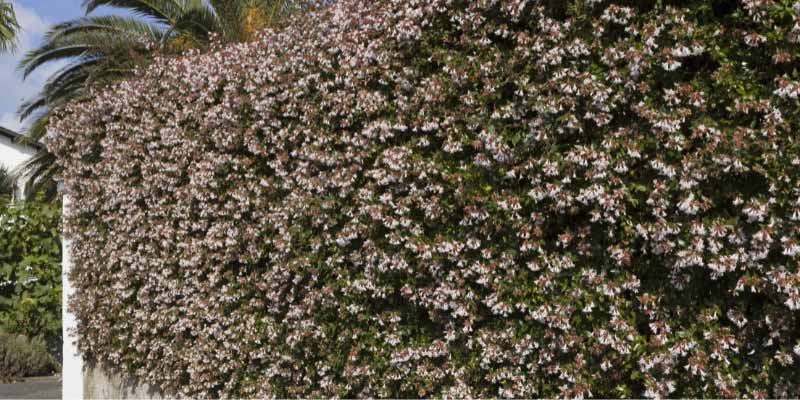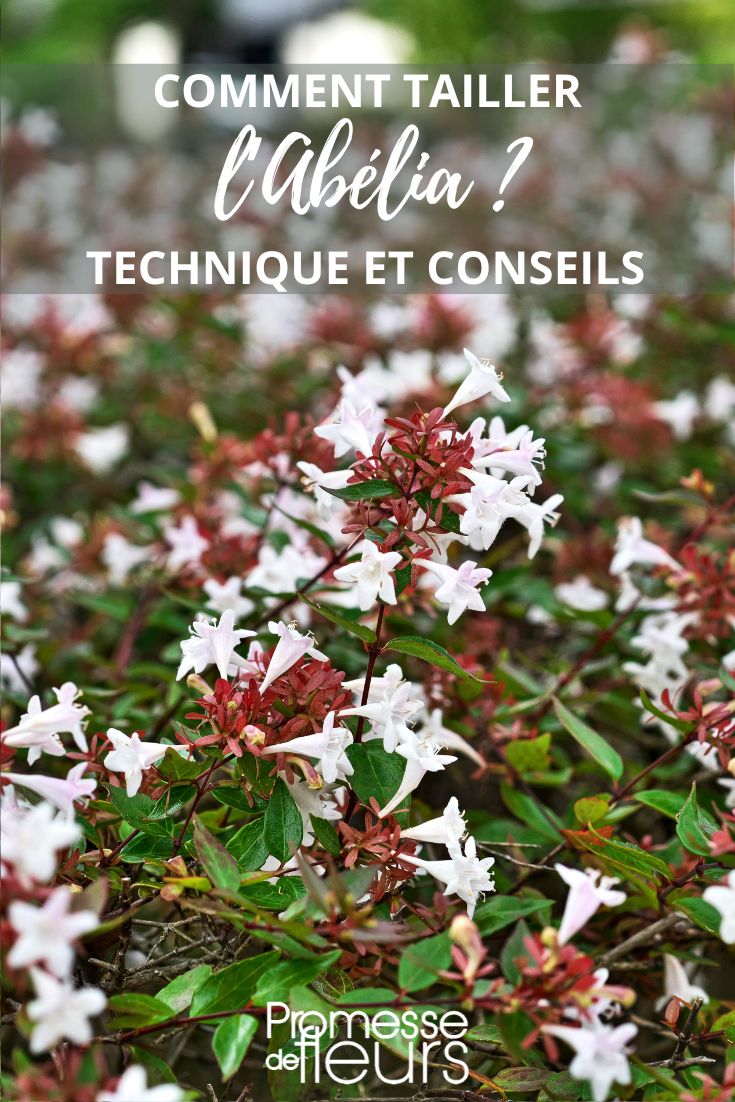Abelia is a beautiful bush that offers white or pink flowering all summer, scented with jasmine and lilac. It also has very decorative semi-evergreen foliage. It grows between 50 cm and 2 m high, depending on species and variety. Its flexible habit, moderate size and bushy silhouette make it suitable for use in informal or clipped hedge, in mixed borders with other small bushes, as a specimen, or even in a large pot. An annual pruning will be enough to keep a compact, balanced habit and to keep it floriferous. And if it shows signs of ageing, a good cut-back will give it a second life! Here is how to prune Abelia easily!

Why pruning Abelia?
Easy to grow and low-maintenance, Abelia requires little attention. Pruning helps maintain a compact, harmonious habit, especially if used in a clipped hedge. An annual prune will promote growth and stimulate flowering. Your Abelia will stay in good health, ready to offer abundant flowering from first days of summer.
When to prune Abelia?
Prune Abelia at end of winter, ideally between February and April, before shoots restart. This period is perfect to prepare bush for new season of growth and flowering. Prune before new shoots appear to minimise stress on plant. We recommend performing a light prune every year after flowering to preserve a balanced habit. To rejuvenate an ageing Abelia by cutting back, proceed in spring.

Necessary equipment
- Pruning shears to prune young shoots and foliage
- Hedge shear and pruning saw for large branches
- Optionally, a hedge trimmer
How to prune Abelia step by step
Maintenance pruning
Maintenance pruning is limited to thinning habit after flowering and removing old wood.
- Use sharp shears or hedge trimmer for a clean cut. Disinfect tools before starting to avoid transmitting diseases.
- Start by removing dead, diseased or thin branches, cutting them back to base to keep only most vigorous.
- Remove branches that appear poorly positioned as well as those that cross each other.
- Remove tips damaged by frost.
- Slightly shorten main branches to even out silhouette.
- If Abelia is in a hedge, adjust height by pruning top of bush evenly to maintain desired shape and prevent bush becoming too invasive.

How to cut back Abelia?
Cutting back is done on specimens older than 6 years which, over time, can look neglected and be less floriferous. You may need to cut back your Abelia more or less drastically so it regains a harmonious shape and abundant flowering year after year.
Moderate cut-back
This pruning consists of cutting only some branches, targeting those that are oldest or least vigorous. This type of pruning stimulates growth without disturbing overall balance of bush. Partial cut-back is carried out progressively over several seasons if necessary. It is not essential to cut everything at once. By cutting one-third of branches each year, you allow bush to renew gently while keeping balanced, full appearance.
- Identify branches to cut back. Start with oldest, least vigorous or those showing signs of fatigue, such as weak flowering or irregular development. Cut them to about one-third of their length.
- Do not prune all branches! Keep young shoots intact, as they are often more floriferous and contribute actively to future growth. This mix of cut and uncut branches ensures continuous flowering and a natural habit.
Severe cut-back
- Cut all branches and trunks to about 20–30 cm above ground. This regeneration pruning will stimulate vigorous new shoots.
- Be sure to feed bush well with compost or an organic fertiliser after such heavy pruning to help it regrow.
- After pruning, collect and remove pruning debris to prevent disease spread. Spread a layer of organic mulch at base of bush to retain moisture and protect roots.
































Comments